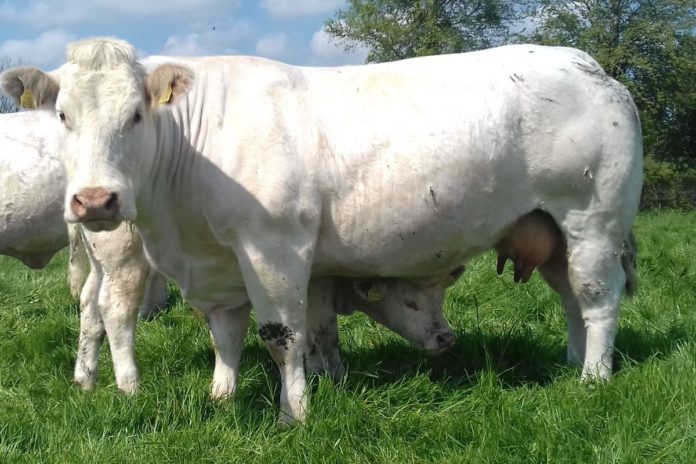What impacts the interval from calving to breeding in sucklers?
According to Professor David Kenny, Head of Animal & Bioscience Department at Teagasc, Animal and Grassland Research and Innovation Centre, Grange, Co Meath, three main factors impact reproductive efficiency in suckler herds.
During a Teagasc Mayo webinar on suckler breeding, he told farmers that these can be broken down into:
- Age at puberty;
- Post-partum interval;
- Conception rate.
Age at puberty/sexual maturity:
He explained that this is when heifers start to have normal heat cycles and can be bred. “Again, she is unproductive in the herd until that happens,” he told farmers.
Post-partum interval:
This is the length of time between when a cow calves and when she starts to have normal cycles again.
“You are all aware that there is a certain period from when the cow calves that she cannot be bred as she is not undergoing normal cycles,” he told farmers.
“The longer that is, the more difficult it is to achieve a 365-day calving interval.”
Conception rate:
“Once she starts cycling again and is eligible to be bred, the conception rate is the next issue. Normally, unlike a dairy cow, the conception rate is not such a big deal in suckler cows; it is better than a typical dairy cow,” Kenny told attendees.
He explained that restricted suckling could advance the onset of cyclicity. “You can lock calves out during the day, perhaps, when they are 1-month-old for a short period, can bring forward cyclicity in cows.”
The interval from calving to breeding
During the webinar, Kenny also listed the factors that impact the interval from calving to breeding.
These include:
- Maternal offspring bonding: “That is the major difference between suckler and dairy cows.”
- Nutrition (pre-partum and post-partum): “Again, pre-partum in terms of its impact on body condition score is critical. In-calf cows in moderate to good condition will typically start cycling again and be eligible for breeding earlier than cows that calf down thin. Generally, heifers take longer to go resume normal cycles after calving compared to more mature cows.”
- Season: “Generally, cows that calf that bit later in the season will typically come back into heat quicker. Equally, cows calving in autumn are often slower to come back into heat again than those in the spring.”
- Bull effect: “There is some evidence to say that once cows are good in condition, if there is a bull running with them, either a vasectomised bull if using AI, or a stock bull, it can bring forward cows, on average.”
Other articles on That’s Farming





